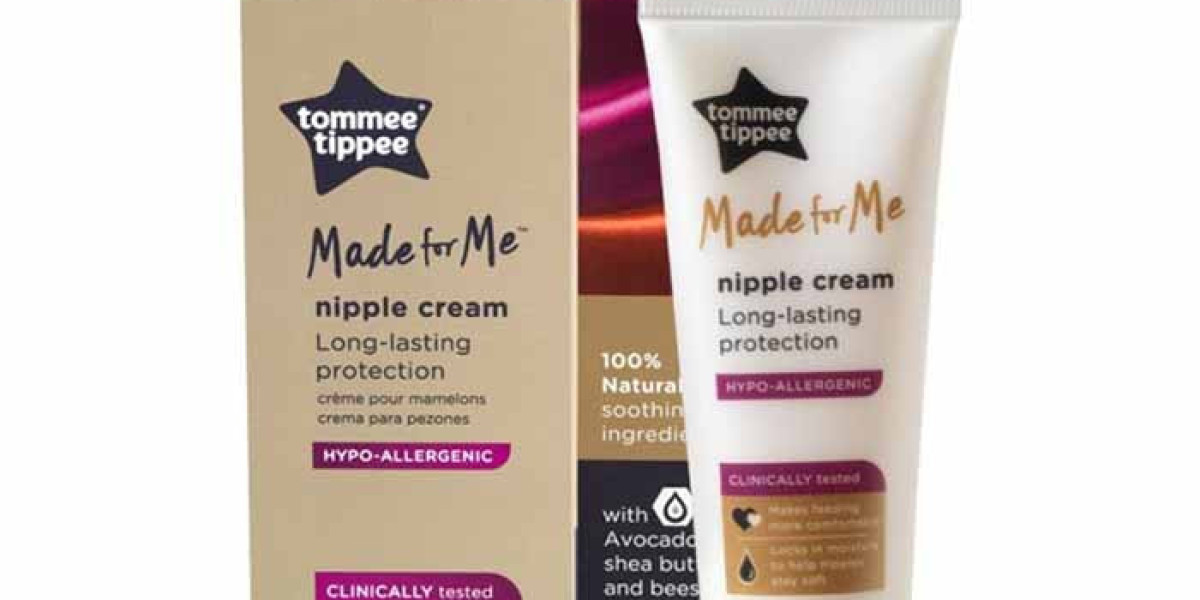Breastfeeding is one of the most rewarding experiences of motherhood. It nourishes your baby and strengthens the emotional bond between you and your little one. However, the journey is not always smooth. Many mothers experience sore, cracked, or dry nipples in the early weeks. That’s where a good breastfeeding cream becomes a lifesaver—helping soothe, heal, and protect sensitive skin.
We’ll explore why breastfeeding cream is essential, what ingredients to look for, how to use it properly, and the best options for new moms.
Why Do Moms Need Breastfeeding Cream?
Breastfeeding may be natural, but it can sometimes feel challenging. Issues like improper latch, frequent nursing, or sensitive skin can leave nipples sore or cracked. This discomfort can make breastfeeding painful and stressful.
A breastfeeding cream:
- Provides instant relief from soreness.
- Helps heal cracked or dry nipples.
- Creates a protective barrier without harming your baby.
- Keeps the skin moisturized and soft.
With the right cream, moms can continue breastfeeding with greater comfort and confidence.
What Makes the Best Breastfeeding Cream?
Not all creams are created equal. Choosing the right one ensures your baby's safety and maximum comfort. Here’s what to look for:
- Safe Ingredients
- Always choose a baby-safe cream, so you don’t need to wash it off before feeding.
- Natural ingredients like lanolin, shea butter, coconut oil, or calendula are excellent choices.
- Hypoallergenic Formula
- Avoid creams with artificial fragrances, dyes, or harsh chemicals, as these can irritate sensitive skin.
- Easy Absorption
- A good cream should absorb quickly, without leaving a sticky residue on your skin.
- Healing Properties
- Look for ingredients that not only soothe but also repair cracked skin.
- Multi-Purpose Use
- Some breastfeeding creams can also be used for chapped lips, dry cuticles, or baby’s dry skin—making them versatile and worth the investment.
Top Ingredients Found in Breastfeeding Creams
Let’s break down the most common ingredients and why they matter:
- Lanolin: A natural wax from sheep’s wool, known for its deep moisturizing and healing properties.
- Shea Butter: Rich in vitamins A and E, it helps soothe dryness and improve skin elasticity.
- Coconut Oil: Naturally antibacterial and moisturizing, great for preventing infection.
- Calendula: A plant extract with anti-inflammatory and healing properties.
- Olive Oil: A gentle, nourishing oil that softens skin and supports healing.
How to Use Breastfeeding Cream Properly
Using nipple cream is simple but requires consistency:
- Wash your hands before applying.
- Take a small amount of cream and gently massage it onto the nipple and areola after every feeding session.
- Since most creams are safe, washing them off before breastfeeding is usually unnecessary.
- Apply as often as needed, especially in the early weeks when feeding is more frequent.
Best Breastfeeding Creams Moms Recommend
Here are some popular and highly recommended options that new moms love:
- Lansinoh Lanolin Cream
- 100% natural and hypoallergenic.
- Deeply moisturizes and heals cracked nipples.
- Safe for both mom and baby.
- Medela Tender Care Lanolin
- Known for quick absorption.
- Free from additives and safe for newborns.
- Earth Mama Organic Nipple Butter
- Made with natural ingredients like shea butter, cocoa butter, and calendula.
- USDA Certified Organic.
- Also works for baby’s dry skin or chapped cheeks.
- Motherlove Nipple Cream
- Herbal-based, made with safe organic ingredients.
- No lanolin, making it great for moms with wool allergies.
- Bamboobies Organic Nipple Balm
- Gentle, soothing, and organic.
- Doubles as a lip balm or moisturizer.
Tips for Preventing Soreness Beyond Creams
While nipple cream is an excellent solution, here are some additional tips to make breastfeeding more comfortable:
- Check Baby’s Latch: Poor latching is one of the biggest soreness causes of soreness. Consider lactation consultant support.
- Air-Dry After Feeding: Allow nipples to dry naturally after breastfeeding to reduce irritation.
- Breast Pads: Use soft, breathable pads to prevent rubbing and absorb leaks.
- Stay Hydrated: Drinking plenty of water helps keep your skin naturally moisturized.
- Balanced Diet: Nutrient-rich foods support faster skin healing.
Frequently Asked Questions (FAQs)
1. Is nipple cream safe for my baby?
Yes, most breastfeeding creams are formulated to be safe for babies and don’t need to be wiped off before nursing.
2. How often should I apply breastfeeding cream?
You can apply it after every feeding session or whenever you feel dryness or discomfort.
3. Can I use regular lotion instead of nipple cream?
No, regular lotions may contain fragrances or chemicals that aren’t safe for babies. Always use a cream designed for breastfeeding.
4. Do nipple creams really help with cracked nipples?
Yes, they provide moisture, promote healing, and reduce pain, making breastfeeding more manageable.
5. Can breastfeeding cream be used for other purposes?
Absolutely! Many creams double as lip balms, hand creams, or baby moisturizers.
Breastfeeding is an incredible journey, but it can also come with its share of challenges. Choosing the best breastfeeding cream can improve your comfort and confidence as a mom. Whether you prefer lanolin-based options or organic herbal balms, the right cream will help soothe, heal, and protect your nipples so you can focus on what truly matters: bonding with your baby.
Every mom deserves comfort during this special stage of life, and a reliable nipple cream is one small investment that delivers significant relief.







